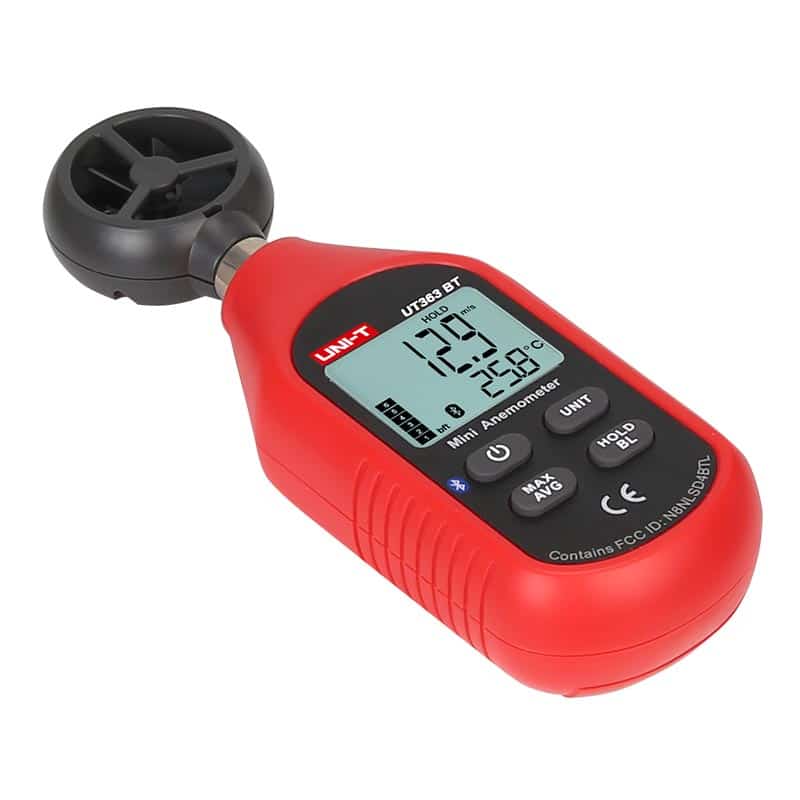Comparing Digital and Mechanical Anemometers: Which is Right for You?
Comparing Digital and Mechanical Anemometers: Which is Right for You?
Blog Article
All You Required to Learn About Anemometers: Just How They Function, Why They Matter, and Where to Use Them
Anemometers, though typically neglected in the world of clinical tools, play a critical duty in various areas, supplying useful understandings into wind speed and airflow patterns. Comprehending the auto mechanics behind these devices is crucial for any person looking for to harness the power of this information. From meteorologists tracking weather patterns to designers making structures with wind loads in mind, the applications of anemometers are varied and far-reaching. As we explore the details of anemometer technology, we will discover the internal operations of these tools, their relevance, and the vital factors to consider when picking the right anemometer for specific applications.

Anemometer Essentials
A crucial instrument used to gauge wind rate and instructions, the anemometer plays a critical role in weather forecasting and different industries. An anemometer normally consists of 3 or four mugs that turn in the wind, a vane that points right into the wind, and sensing units to track the turnings or motions.
There are different types of anemometers offered, including mug anemometers, vane anemometers, hot-wire anemometers, and sonic anemometers, each with its distinct features and applications. Mug anemometers are commonly used for basic wind speed measurements, while vane anemometers are liked for directional measurements.
Principles of Anemometer Procedure
Structure on the fundamental understanding of anemometer fundamentals, the concepts of anemometer procedure clarify the mechanics behind wind speed and instructions measurements. Cup anemometers, for instance, have three or even more cups that capture the wind, creating them to rotate quicker as the wind rate rises. Hot-wire anemometers depend on a warmed wire that cools down as wind passes over it, with the price of cooling establishing the wind speed.
Value of Anemometers
Anemometers play an essential role in gauging wind speed and direction, giving important information for weather forecasting, climate studies, environmental surveillance, and aviation operations. Meteorologists count find more information on anemometers to collect precise wind information, aiding them comprehend climate patterns, predict storms, and problem timely cautions to the public. Wind ranch drivers use anemometers to This Site assess wind conditions and make best use of power production from wind turbines.
Applications Throughout Numerous Industries
In the eco-friendly energy industry, anemometers play a crucial duty in evaluating wind conditions for wind farm placements, ensuring optimum power manufacturing. Industries like construction and mining make use of anemometers to keep an eye on wind rates, essential for security procedures, especially when working at elevations or in open-pit mines where strong winds can present dangers. In farming, anemometers aid farmers in handling plant spraying by giving real-time information on wind speed to prevent drift.

Selecting the Right Anemometer for Your Demands
For basic purposes, a cup anemometer is appropriate for measuring wind speed, while a vane anemometer gives wind direction data. Hot-wire anemometers are excellent for reduced airspeed dimensions, and ultrasonic anemometers use high precision and resilience.

Verdict
In verdict, anemometers play a vital duty in measuring wind rate and instructions throughout numerous markets. It is crucial to think about the value of anemometers in order to make enlightened choices when selecting the most ideal gadget for gauging wind problems.
There are numerous types of anemometers available, consisting of mug anemometers, vane anemometers, hot-wire anemometers, and sonic anemometers, each with its special attributes and applications. Mug anemometers are generally used for fundamental wind find more information rate dimensions, while vane anemometers are preferred for directional measurements. Hot-wire anemometers are appropriate for low airspeeds, and sonic anemometers are perfect for high-precision dimensions in research and commercial setups.Structure on the foundational understanding of anemometer basics, the concepts of anemometer procedure elucidate the auto mechanics behind wind rate and instructions measurements. For basic functions, a cup anemometer is appropriate for gauging wind rate, while a vane anemometer gives wind direction data.
Report this page